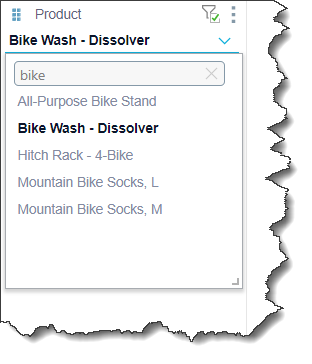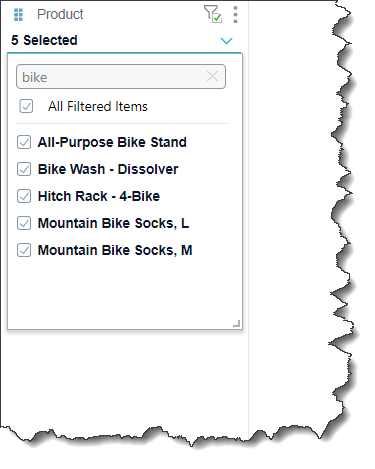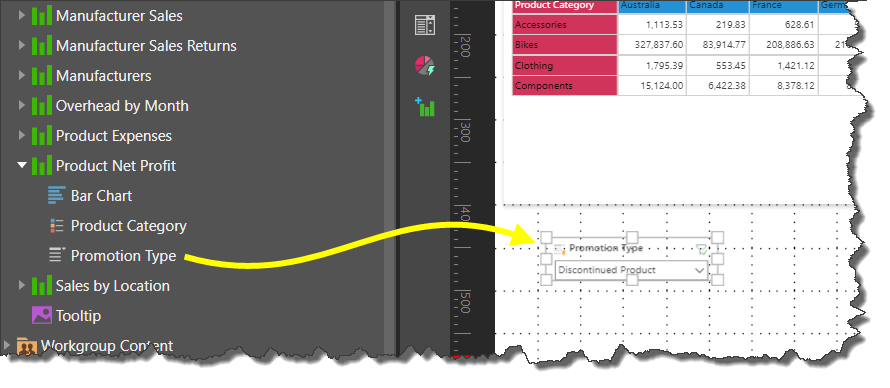Presentation Slicers
A "slicer" comprises a list of member elements from a model hierarchy that you can use to filter the query by one or more elements at runtime. For example, if you add the Country hierarchy to a drop-down slicer, you can use it to filter the data query to include data from just one selected country from the hierarchy.
Slicers can also be used with measures to drive slightly different mechanisms, including:
- A "switching" effect, where the measure can be swapped out using the measure slice. These are known as variable measure sets.
- A "parameterization" effect, where a VALUE filter can be built using a given measure to numerically filter the query. (see below for more information.)
- Click here for more on Slicers in Discover.
Slicer Types
- Drop Down: Adds a drop-down list from which you can select one slice at a time.
- Multi Select Drop Down: Adds a drop-down list from which you can select multiple slices simultaneously.
- List Box: Adds a single-select list within a box container.
- Multi Select List Box: Adds a multi-select list within a box container.
- Text Box: Adds a textbox with drop-down.
- Buttons: Adds single-select buttons, rather than a list.
- Multi Select Buttons: Adds multi-select buttons.
- Multi Select Tree: Supports 'regular' hierarchies in both cube and SQL models. Adds a multi-select tree list; you can navigate through the tree to find and select relevant elements.
- Single Select Tree: Supports 'regular' hierarchies in both cube and SQL models. Adds a single-select tree list; you can navigate through the tree to find the relevant element.
- Date-Time Picker: The date-time picker is a specialized slicer visualization designed to make it easier to use date-time hierarchies and their associated calculations.
Search Slicer Elements
You can search slicer elements in drop-down, list box, and tree slicers from the slicer search bar.

When using multi select drop down, list box, or tree slicers, the search will return all elements matching the given search input. You can select all the returned results by clicking "All Filtered Items".

Slicer Actions
Actions can be attached to slicers in Present, so that when a user changes the slicer in runtime, it triggers an effect (other than filtering queries). Click here for more on slicer actions.
Adding Slicers to a Presentation
There are various options for adding slicers to presentations:
- Add an existing slicer that was built in Discover (see below)
- Build a new slicer on the fly in Present
- Configure an advanced slicer in Present
- Add Hidden Slicers, rather than on-slide slicers
- Add multiple slicers and cross filter them to create a cascading slicer effect
- Add multiple slicers and apply cross highlighting to them
- Add slicers by reusing previously defined slicers in existing Discover Reports (see below)
Slicers in Present are configured by applying interactions from slicer to visual, and from slicer to slicer.
Add Slicers from Discover
Adding slicers from Discover to presentations is a simple process achieved in just a few steps.
Step 1
To add existing slicers to other slides in the presentation, find the required slicers in the Content panel (yellow highlight below).

Step 2
Drag the slicer onto the canvas (yellow arrow below).

Step 3
Add interactions between the slicer and any visualizations that the slicer should filter.

To test your slicer, launch the presentation in runtime.
